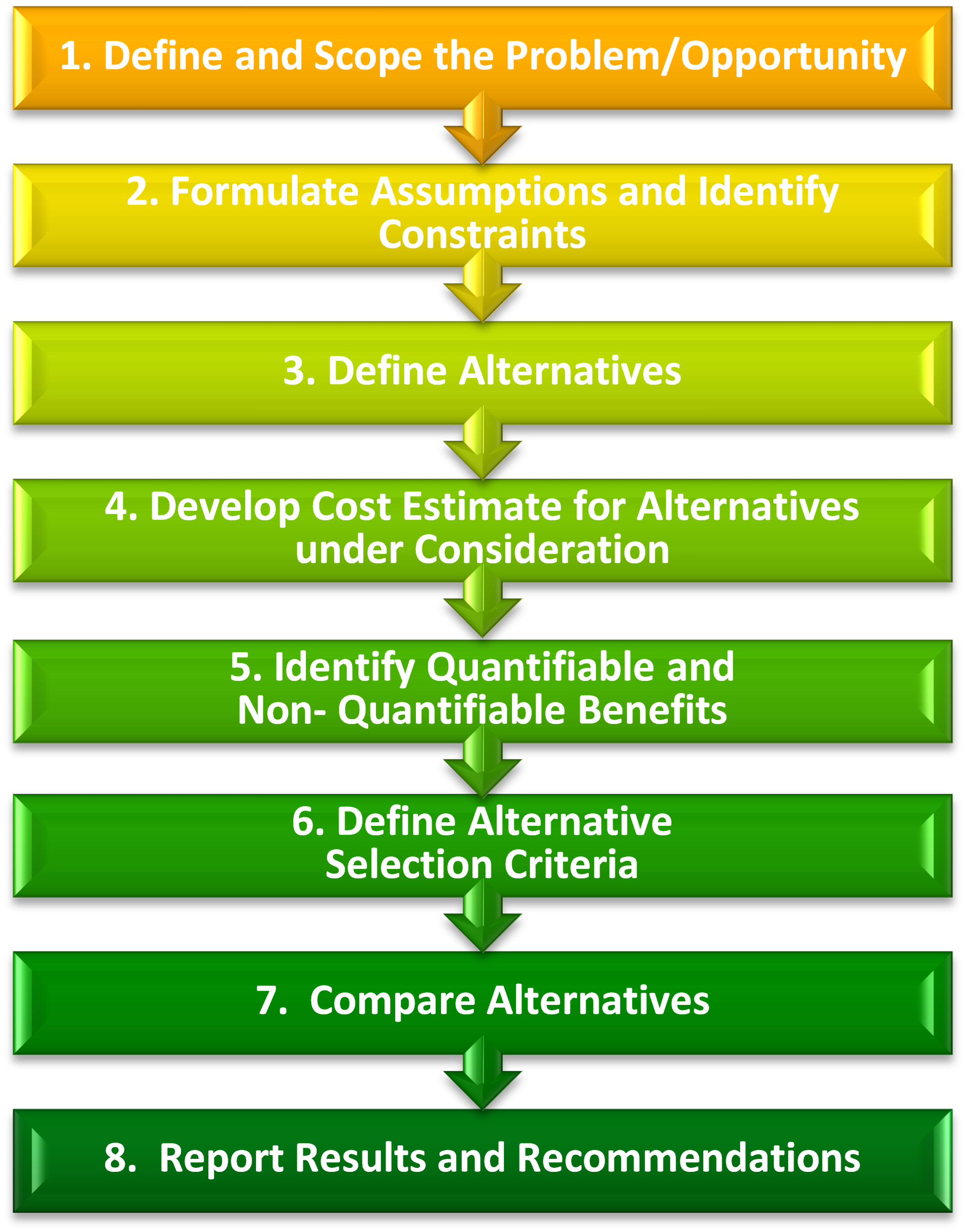
CBA a Decision-Making Tool
In today’s resource-constrained environment, Organizations must exercise wise stewardship of every dollar it manages. A key element in that stewardship is to develop and use sound CBA practices throughout all requirement/resourcing processes. For every proposed program, initiative or decision point that is presented to decision makers, it is important to provide an accurate and complete picture of both the costs to be incurred and the benefits to be derived.
The Senior Leaders of the Department of Defense have adopted CBA as the decision making tool of choice.
A CBA defines the costs, operational benefits, and financial benefits of alternative courses of action and helps the decision maker evaluate the proposed solutions to a problem or opportunity.
CBA 8-Step Process
1. Develop and Scope the Problem/Opportunity
2. Formulate Assumptions and Identify Constraints
3. Define Alternatives
4. Develop Cost Estimate for Each Alternative
5. Identify Quantifiable and Non-Quantifiable Benefits
6. Define Alternative Selection Criteria
7. Compare Alternatives
8. Report Results and Recommendations
Value
If these cost management tools aren't already in your project management toolkit, this course is an efficient and cost-effective way to acquire them. The time and money spent are likely to be repaid many times over the first time you apply these methods to a real-life project.
Cost Benefit Analysis places basic cost management tools within the grasp of nearly any resource manager. Each skill sequence builds on the one before. Using clear explanations and providing ample practice, this course makes learning when and how to use cost management calculations and indices as uncomplicated as possible.
CBA course is instructional and case based. Cases describe management initiatives from multiple industries such as airlines, oil companies, movie industry, banking, sports, software, and services.
Overall, for managers new to Cost Benefit Analysis, this course should prove useful, regardless of the number of zeroes and commas in your project budgets.
COST MANAGEMENT BASICS 1-Introduction to Cost management
Cost Management 4 Days Training 1-Day 1: Cost Management Overview 2-Day 2: Cost Object Definition
Cost Management 101 1-Section 1: Cost Management Overview 2-Section 2: Cost Model Components Cost Management Certificate Course Introduction to Cost Estimating | Welfare Economics & Cost Benefit Analysis 2-Introduction to Cost-Benefit Analysis 4-Basics of Cost Benefit Analysis 5-Valuing Benefits and Costs in Primary Markets 6-Valuing Benefits and Costs in Primary Markets (II) 7-Valuing Benefits and Costs in Secondary Markets 8-Discounting Future Benefits and Costs |
Total cost management (TCM) is the name given by AACE International to a process for applying the skills and knowledge of cost engineering. It is also the first integrated process or methodology for portfolio, program and project management.



